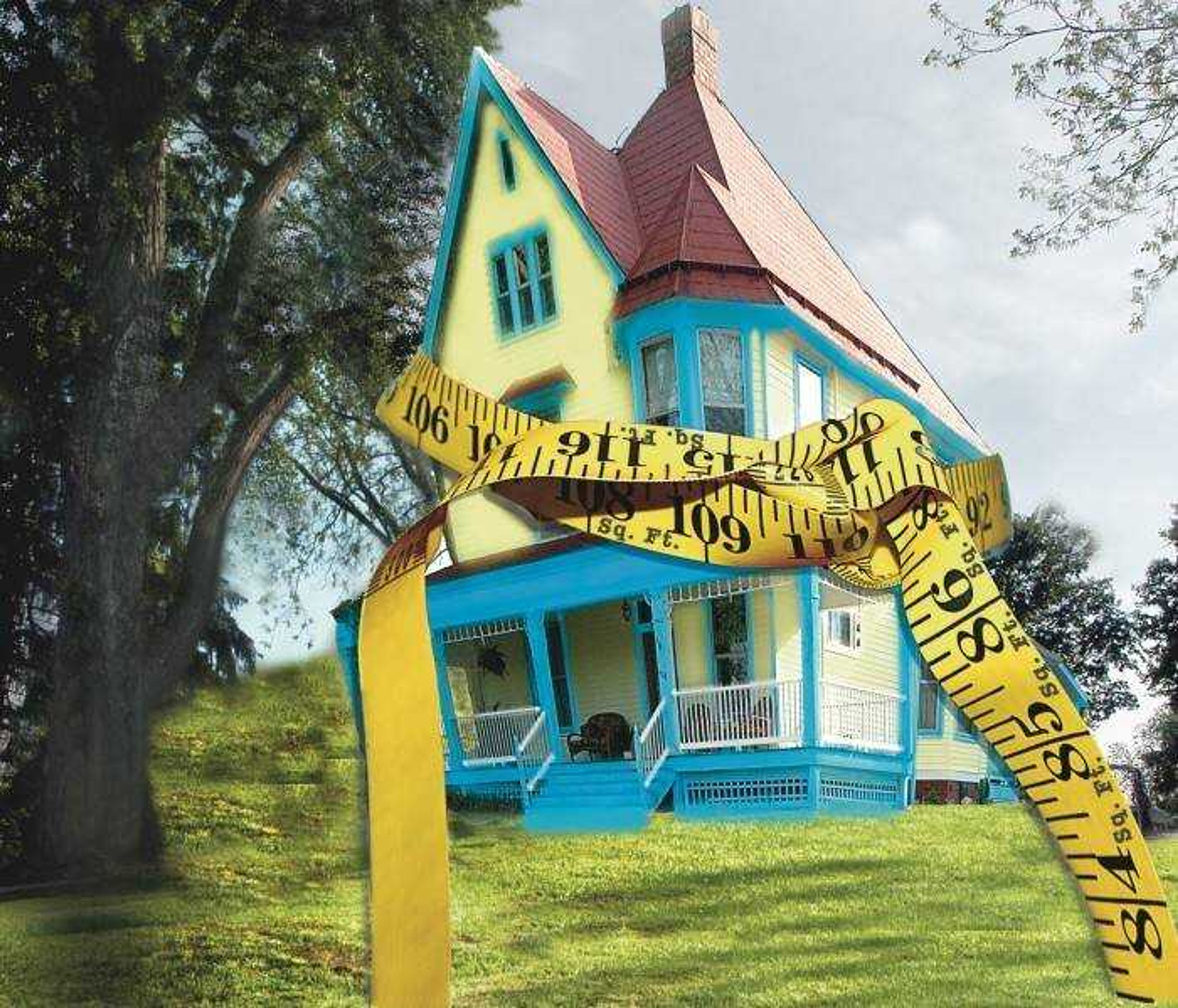Trimming down the house
The average American home has more than doubled in size since 1950. That's led to super-sized structures that critics refer to as "McMansions." The ballooning American homes need to be trimmed down to a more livable size, some architects and builders say...
~ Builders seeing demand for convenience and character over space
The average American home has more than doubled in size since 1950. That's led to super-sized structures that critics refer to as "McMansions."
The ballooning American homes need to be trimmed down to a more livable size, some architects and builders say.
In 2004, the average American home was more than 2,300 square feet. That was 140 percent bigger than the 980-square-foot home that was typical more than half a century ago.
But a quiet rebellion is taking place now. Sparked by architect Sarah Susanka's bestseller, "The Not So Big House," a less-is-more trend is starting to take hold.
A few Cape Girardeau developers have started championing the trend too.
Developer Kenny Pincksten plans to build Laurel Grove, an 18-home subdivision in the 3000 block of Lexington Avenue.
Pincksten has built conventional homes in the past. The last one was 5,000 square feet in size.
His latest project will involve much smaller homes, averaging about 1,800 square feet in size.
The houses will range from one story to a story and a half. They will have three to four bedrooms.
But they won't be spacious mansions. As he sees it, bigger isn't always better.
Susanka, a Raleigh, N.C., architect, outlined the philosophy in her book published in 1998.
"It's time for a different kind of house," she wrote. "A house that is more than square footage; a house that is not so big, where each room is used every day. A house with a floor plan inspired by our informal lifestyle instead of the way our grandparents lived."
Susanka has criticized the nation's sprawling homes with their unused formal dining rooms and over abundance of bathrooms as nothing more than "massive storage containers for people."
Pincksten said most of the houses in his new development won't have formal dining rooms. "That is a room in a house that never gets used," he said, echoing Susanka's view.
Like others who favor the less-is-more trend, Pincksten wants his "Laurel Grove" development to have old-fashioned, neighborhood character.
The houses will be designed to reflect the traditional architecture of the 1950s with porches and white picket fences.
"Every house will have at least one porch and every house will come with a porch swing," he said.
Pincksten said he wants to build a neighborhood that reminds people of TV's fictional "Mayberry" town made famous on the "Andy Griffith Show."
His leaner-homes concept interests home buyers, said Pincksten. He's already secured buyers for 20 percent of the homes.
"That is just through word of mouth," he said. He said smaller houses appeal to everyone from retired couples to young families.
Less square footage means lower heating and cooling costs, Pincksten said.
Smaller homes also are going up at the corner of Cape Rock and Lombardo drives.
The Rhodes Group's Villas at Cape Rock development will have seven brick homes. Three have been constructed and construction could begin this summer on the remainder of the houses on the nearly two-acre site, said developer Scott Rhodes.
The single-family homes with basements average about 1,444 square feet on the main floor. One of the houses was built on a concrete slab. It has no basement.
The houses are built close together. The developer will maintain the small lawns and the landscaping.
"It is designed for empty nesters," said Rhodes, referring to couples whose children are grown and no longer living at home.
"So many people want things simple and convenient," he said.
"There's certainly a market for this," Rhodes said of trimmed down homes.
Americans increasingly are too busy to maintain large homes, he said. "Having a big home is not convenient," said Rhodes.
Rhodes' villas don't have formal dining rooms. "People live in their bedroom, family room and kitchen area," he said.
Home-design writer Marc Vassallo of New Haven, Conn., said the less-is-more trend hinges on providing a home with quality not quantity.
"It's build a house one third smaller than you thought you needed but just as expensive," he said.
Pincksten's homes, for example, won't be cheap. They'll probably sell for $190,000 to about $250,000," he said.
Vassallo, who co-authored "Inside the Not So Big House" with Susanka, said people increasingly want homes with character more than size.
"Few people can afford both," he said.
They want houses, said Vassallo, that are designed around today's informal style. "People want to open up the kitchen. It is not just a place where the wife goes and hides and makes a meal," he said.
The best homes, he said, are those with rooms that allow its occupants to "share time with each other."
mbliss@semissourian.com
335-6611, ext. 123
Connect with the Southeast Missourian Newsroom:
For corrections to this story or other insights for the editor, click here. To submit a letter to the editor, click here. To learn about the Southeast Missourian’s AI Policy, click here.










